
25+ Ways to Increase Service Agent Productivity
By Rasel Siddiqe
May 18, 2024
Last Modified: November 13, 2025
The past decade has brought a universal truth: responsive customer service is non-negotiable. Whether you’re in telecommunications, banking, automotive, or e-commerce, the goal is clear: deliver top-notch experiences. Agent productivity plays directly into your customer experience.
According to Microsoft’s study, 56% of respondents, drop a business after just 1 bad service experience. So it’s not something you can overlook.
But here’s the kicker—achieving exceptional customer service isn’t just about fancy tech and streamlined processes. It all boils down to your frontline support heroes—the ones who make it happen.
Understanding the Agent Efficiency paradigm
Getting agents to work smarter, not harder, isn’t just about fancy tech upgrades. Research keeps telling us the same thing: customers get ticked off when they’re stuck dealing with slow and inefficient support reps, even if you’ve got all the bells and whistles like IVR systems and chatbots.
So, what’s the real issue here? It’s all about how much time agents waste hunting down the right info to help out customers. That’s why you need to switch things up. Let’s focus on making knowledge management a breeze, so your agents can do their thing without all the hassle.
It’s all about how efficiently your agent handles tasks and helps customers out. We’ll also dive into what exactly makes up agent productivity, but first, let’s take a look at something called the Agent Efficiency Pyramid.
What is agent productivity?
Agent productivity means how well a customer service rep or agent in a service-based job, completes task considering all factors such as, complexity, volume, resources and skill.
The Agent Efficiency Pyramid
To navigate the complexities of improving agent efficiency, imagine a pyramid structure that gradually increases productivity as you reach the top. At its base lie fundamental knowledge management principles and workflow policies, which serve as the bedrock for what comes later. These principles put a lot of focus on consolidating knowledge into a centralized repository and streamlining processes for scale.
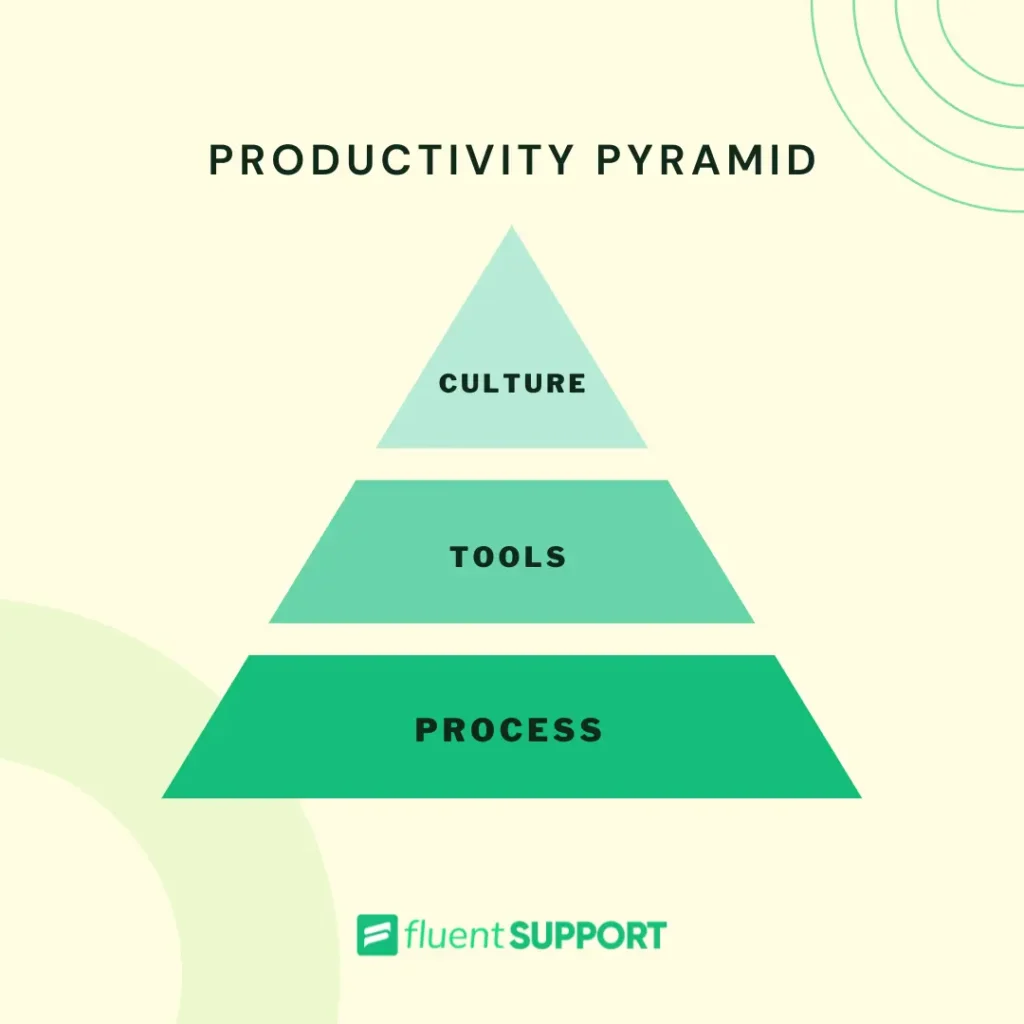
Imagine a pyramid that shows us how to make agents work better. Picture it like this: at the bottom, you’ve got the basic stuff—the core ideas that set the stage for everything else. We’re talking about policies like putting all our knowledge in one easy-to-find place, cutting out pointless searches, and making sure everyone is on the same page about the workflow. That’s where it all starts.
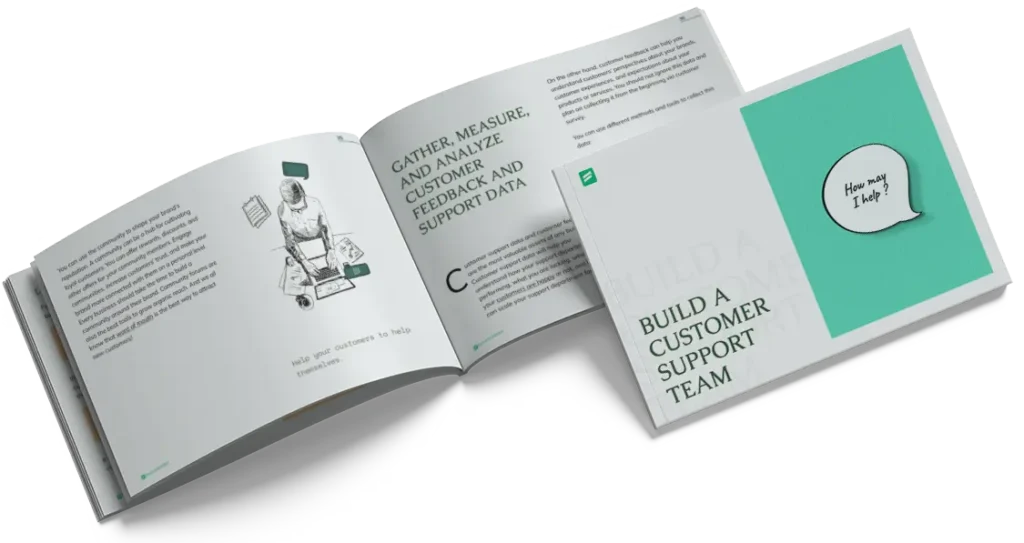
How do you measure productivity in service?
Measuring productivity in service-based industries, such as customer support, involves assessing the efficiency and effectiveness of various operational processes and activities. Here are some key metrics and approaches commonly used to measure productivity in service:
Service level
Service level measures the percentage of calls answered within a specific time frame, typically expressed as a percentage. For example, a service level of 80/20 means that 80% of calls are answered within 20 seconds. This metric indicates the responsiveness of the service operation.
Average handling time (AHT)
AHT represents the average duration of a customer interaction, including the time spent on the call or interaction and any related after-call work. Lower average handling time values generally indicate higher productivity, as agents can handle more inquiries within a given time period.
First contact resolution (FCR)
FCR measures the percentage of customer inquiries or issues resolved during the initial contact with the service provider, without the need for further follow-up or escalation. Higher FCR rates indicate greater efficiency and effectiveness in resolving customer concerns.
Contact volume
Contact volume refers to the total number of customer interactions received by the service operation within a specific period, such as calls, emails, or chat sessions. Analyzing contact volume trends helps assess workload and resource requirements.
Occupancy rate
Occupancy rate measures the percentage of time that agents spend actively engaged in handling customer interactions or performing related tasks, such as documentation or training. Higher occupancy rates suggest efficient utilization of agent capacity.
Utilization rate
Utilization rate measures the percentage of time that agents spend in productive work activities relative to their total available working time. This metric considers both active engagement with customer inquiries and non-contact-related tasks.
Customer satisfaction (CSAT) score
CSAT score reflects customers’ satisfaction level with the service quality and their overall satisfaction with the support received. It is often assessed through post-interaction surveys or customer feedback surveys. Higher CSAT scores indicate better service outcomes and customer experiences.
Find, store and access customer feedbacks
all in one system.
Net promoter score (NPS)
Net promoter score measures customers’ likelihood to recommend the service or organization to others based on their recent experience. It provides insights into customer loyalty and advocacy, which are key indicators of service quality and long-term business success.
Quality assurance (QA) metrics
QA metrics assess the quality and accuracy of agent interactions based on predefined criteria, such as adherence to call center scripts, resolution accuracy, and compliance with service standards. Monitoring QA metrics helps maintain service consistency and identify areas for improvement.
Employee satisfaction and engagement
Employee satisfaction and engagement metrics, aka. agent experience, such as employee surveys, turnover rates, and absenteeism levels, indirectly reflects the productivity and effectiveness of service operations. Satisfied and engaged employees are more likely to deliver high-quality service and contribute to positive customer experiences.
Key Strategies for Enhancing Agent Productivity
Improving agent productivity is crucial for contact centers aiming to enhance customer satisfaction and streamline operations. The strategies outlined by various experts provide valuable insights into optimizing workforce management and fostering a positive work environment. We’re going to classify them into broader groups as shown in the pyramid. So, you can implement them as you need to, focusing on different aspects of productivity.
Culture
Culture, in a business setting, comprises the environment of the workplace. However, it’s got nothing to do with the physical environment. Rather, it focuses on the vibes of the company both including and excluding employee behavior and mindset. Here’s what fosters a culture of
Celebrate successful performance
Recognizing and celebrating agents’ achievements fosters a culture of positivity and motivation within the contact center. Regular acknowledgment of agents’ successes reinforces desired behaviors, boosts morale, and cultivates a supportive environment where individuals feel valued and appreciated.
Show management support
Active participation from managers during surges in call volumes demonstrates care and support for frontline agents. By assisting with workload management and providing additional resources during peak periods, managers alleviate stress, boost morale, and foster a sense of camaraderie within the team.
In addition to these traditional methods, many managers now leverage modern tools, such as AI meeting note-takers and other AI platforms, specifically designed to enhance active participation.
Facilitate career development
Providing opportunities for skill development and career advancement demonstrates investment in agents’ future growth. By offering training programs, mentorship opportunities, and clear pathways for progression, organizations foster a culture of continuous learning and professional development, increasing employee engagement and loyalty.
Prioritize continuous learning
Implementing e-learning programs enables agents to upskill and improve productivity while minimizing time away from customer interactions. By offering self-paced training modules and resources, organizations foster continuous learning, enhance competencies, and adapt to evolving industry trends, ultimately driving better service outcomes.
Encourage regular breaks
Burnout is a real challenge for customer support agents. Allowing agents to take frequent breaks prevents that and maintains productivity levels. By promoting work-life balance and encouraging self-care practices, organizations support employee well-being, reduce stress, and enhance long-term performance and retention.
Support remote work
Allowing agents to work from home promotes flexibility and trust, which can enhance productivity. By providing remote access for Mac and other systems and resources, organizations accommodate diverse work arrangements, increase employee satisfaction, and attract top talent regardless of location.
Encourage competition
Publicizing individual performance figures incentivizes competition and boosts productivity among agents. By recognizing top performers and fostering a culture of achievement, organizations motivate individuals to excel, drive performance improvements, and deliver exceptional customer service.
Tools
Although it’s in the middle of the pyramid, Tools have the fastest implementation to returns funnel among these categories. Mostly because tools aren’t dependent on modifying human behavior.
Invest in communication tools
Investing in communication tools like contextual intelligence-enabled headsets facilitates real-time collaboration and reduces call handling time. By equipping agents with advanced communication technologies, organizations improve responsiveness, streamline workflows, and enhance service quality, ultimately leading to greater customer satisfaction.
Integrate systems for real-time information
Integrating agent contact management systems with customer records provides agents with personalized service and increases efficiency. By consolidating customer data into a unified interface, organizations empower agents to access relevant information quickly, personalize interactions, and resolve inquiries more effectively.
Measure effectiveness
Combining productivity metrics with customer satisfaction scores identifies top-performing agents and areas for improvement. By evaluating performance holistically, organizations gain insights into agent effectiveness, customer experience, and operational efficiency, enabling targeted interventions and continuous improvement efforts.
Invest in wireless headsets
Untethering agents from their desks with wireless headsets improves mobility and productivity. By enabling agents to move freely and access information on the go, organizations enhance responsiveness, reduce call transfer rates, and improve overall service quality.
Prioritize agent comfort
Choosing comfortable headsets supports productivity and agent satisfaction. But that’s just one part of the things an agent uses throughout the day. By investing in ergonomic designs and lightweight materials, organizations minimize discomfort, reduce fatigue, and create a conducive work environment conducive to focus and productivity.
Optimize IVR usage
Using IVR intelligently streamlines customer interactions and improves efficiency. By collecting relevant information upfront and routing inquiries to the most appropriate agents, organizations reduce handling times, enhance first-contact resolution rates, and improve overall service delivery.
Offer multichannel interactions
Providing opportunities for agents to engage in various types of interactions keeps them motivated and engaged. By diversifying tasks and offering cross-training opportunities, organizations foster skill development, increase versatility, and adapt to evolving customer preferences.
Manage channels in a Universal Queue
Breaking down silos between communication channels enables agents to handle inquiries more effectively. By consolidating interactions into a unified queue, organizations improve visibility, streamline workflows, and deliver consistent service across channels.
Provide instant access to knowledge
Implementing knowledge management tools enables agents to access relevant information quickly, improving efficiency and service quality. By centralizing knowledge resources and providing intuitive search functionalities, organizations empower agents to resolve inquiries more effectively and enhance customer satisfaction.
Provide regular feedback
Listening to calls frequently and providing agents with both positive feedback and constructive criticism supports their development and performance improvement. By offering personalized coaching and development opportunities, organizations foster continuous learning, service skill development, and career growth.
Unify customer information
Centralizing customer data eliminates time wasted searching through multiple systems suh as intergated CRM, improving efficiency and service quality. By providing agents with instant access to comprehensive customer profiles, organizations personalize interactions, anticipate needs, and deliver proactive support.
Utilize Social Media
Monitoring social media mentions prevents overload and improves productivity in managing online interactions. By setting queue limits and prioritizing interactions, organizations streamline social media management, enhance responsiveness, and protect their brand reputation.
Process and Policy
Process and policy form the basis of a productive team. If you’re policies aren’t optimized for efficiency, tools, and culture will mean very little if any. Your policies are the bedrock for more advanced paths to take toward overall efficiency.
Adapt to demand
Reassigning agents across different interaction types based on demand optimizes resources and ensures efficient handling of customer inquiries. By dynamically allocating agents to address fluctuating workload patterns, organizations can maintain service levels, prevent backlogs, and keep agents engaged in meaningful tasks.
Empower agents
Providing agents with access to their own performance scores enables self-evaluation and continuous improvement. By encouraging agents to monitor their progress and identify areas for development, organizations empower individuals to take ownership of their professional growth, leading to enhanced performance and job satisfaction.
Implement self-service options
Implementing self-service options for simple queries reduces agent workload and improves efficiency. By enabling customers to resolve routine inquiries independently through intuitive interfaces or automated systems, organizations streamline operations, reduce handling times, and enhance overall customer satisfaction.
Implement flexible shift patterns
Offering agents flexibility in scheduling promotes work-life balance and enhances job satisfaction. By accommodating diverse lifestyles and personal commitments, organizations empower agents to manage their time effectively, resulting in higher productivity, lower absenteeism, and improved employee retention.
Involve agents in scheduling
Increasing agent involvement in scheduling improves adherence and engagement. By allowing agents to participate in shift planning and decision-making processes, organizations promote autonomy, increase job satisfaction, and create a more collaborative work environment.
Maintain occupancy during low-volume periods
Utilizing workforce management solutions ensures agents remain productive during quieter periods. By scheduling non-phone-related tasks or back-office work during troughs in inbound activities, organizations optimize resource utilization, minimize idle time, and maximize productivity.
Implement structured coaching processes
Reviewing agent performance regularly and providing constructive feedback supports development and performance improvement. By offering targeted coaching sessions, organizations address skill gaps, reinforce best practices, and empower agents to excel in their roles.
Simplify processes with unified interfaces
Integrating systems provides agents with a comprehensive view of the customer, streamlining processes and reducing handling time. By centralizing customer data and eliminating the need to navigate multiple systems, organizations improve efficiency, enhance accuracy, and deliver a seamless customer experience.
Wrapping up
When it comes to making agents super productive, you’ve gotta go all in. That means tackling the main problems head-on and making sure your team has all the info they need. When businesses focus on managing knowledge better, they give their support folks the tools they need to knock it out of the park with customers every time.
And hey, as tech keeps changing, you’ve gotta stay quick on your feet and ready to try out new ways to make agents more productive.
Until next time, happy serving!
Start off with a powerful ticketing system that delivers smooth collaboration right out of the box.






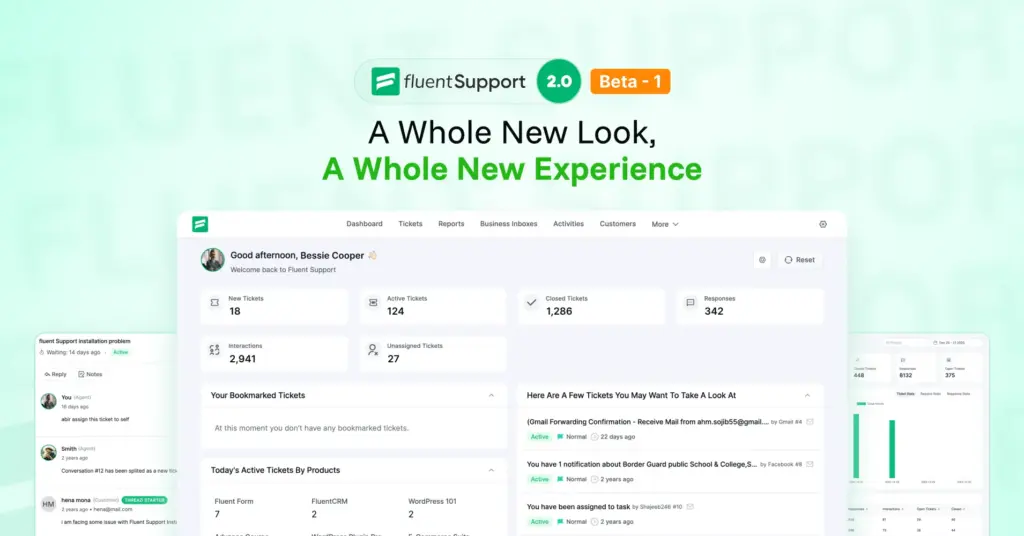
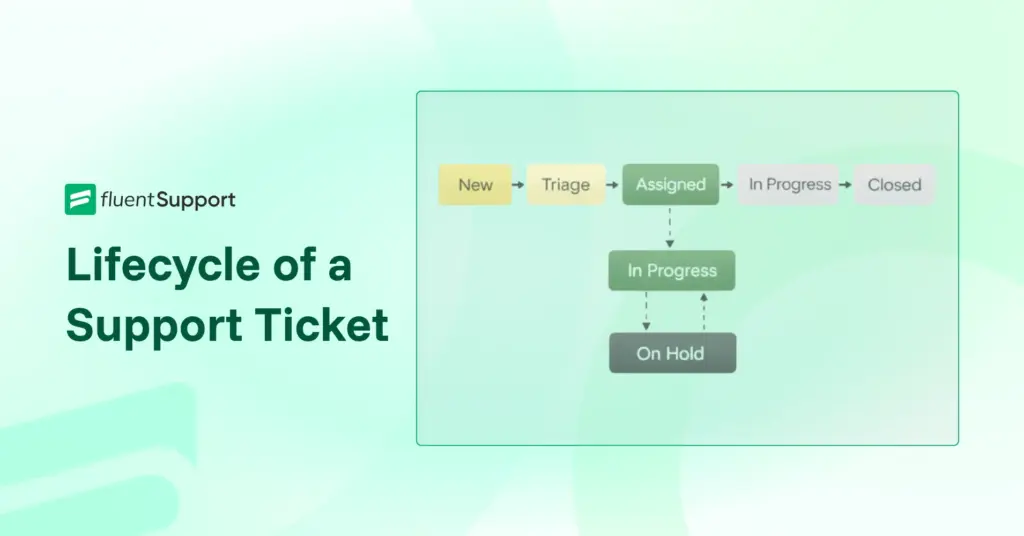
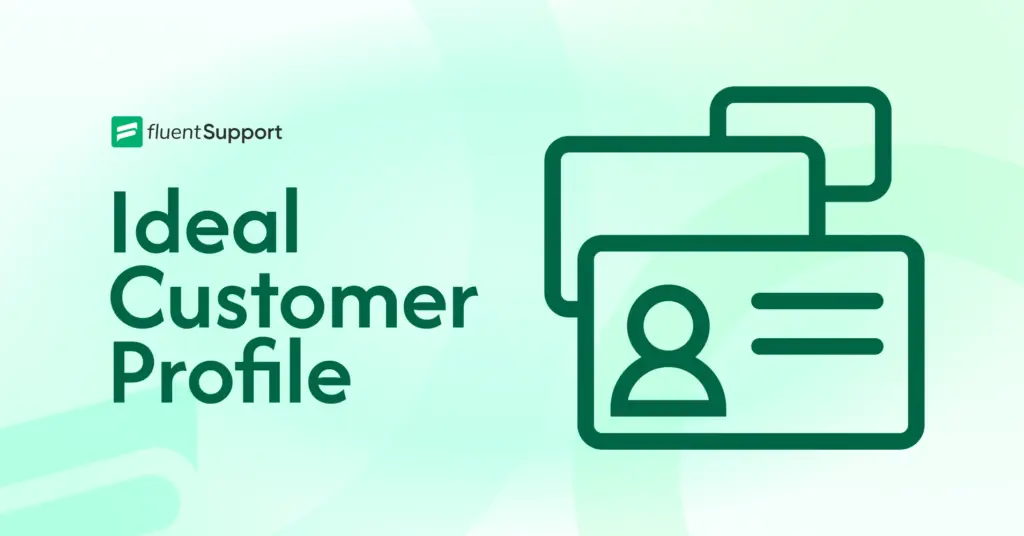
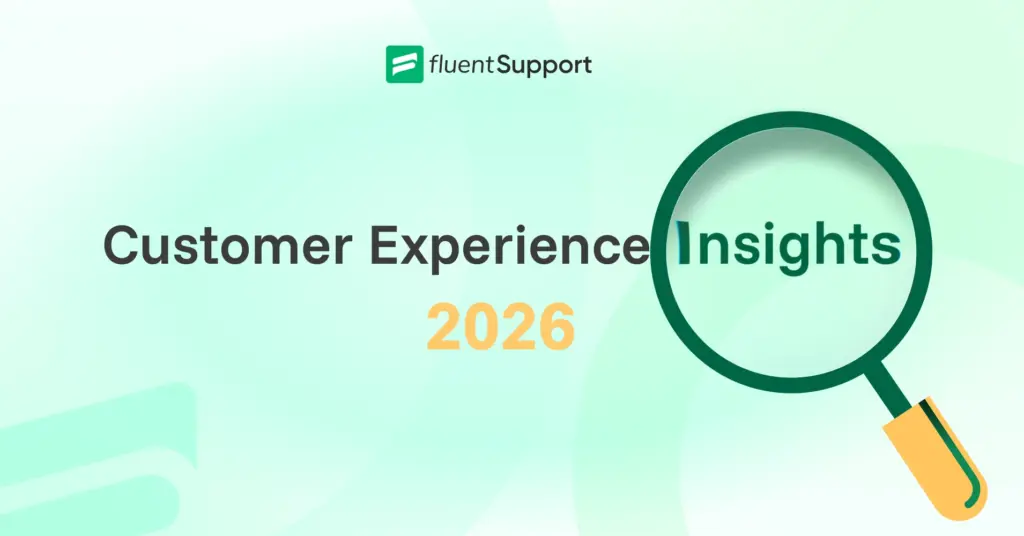
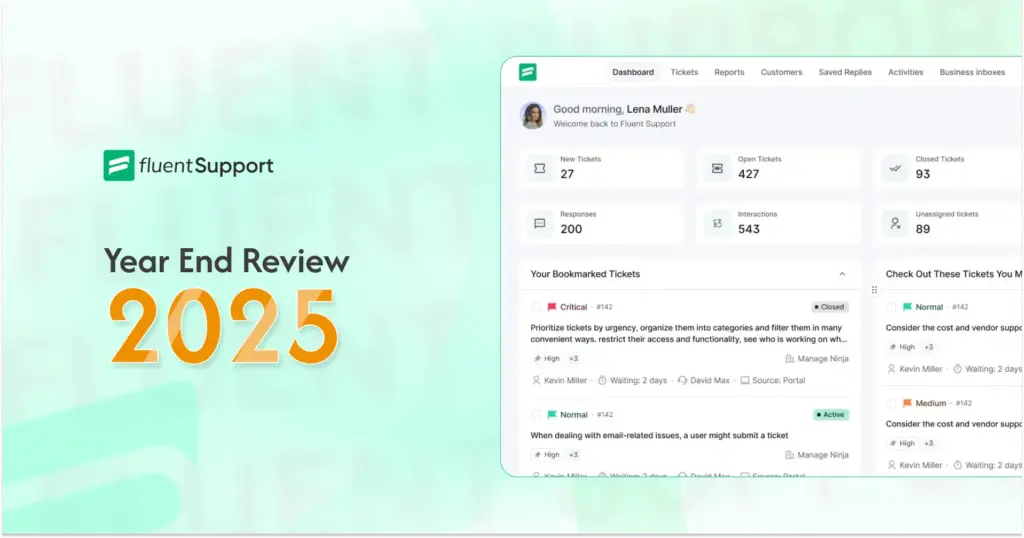

Leave a Reply